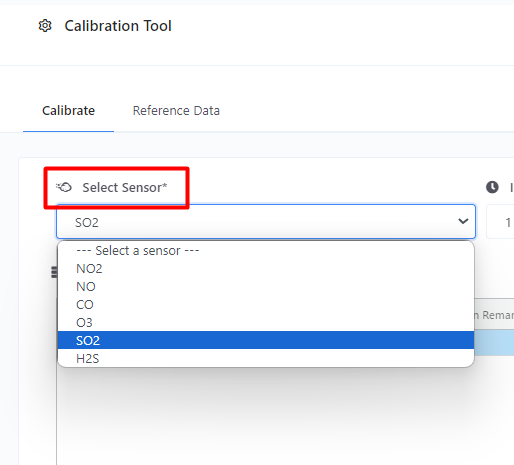This calibration procedure involves identifying a specific period during which the sensor is exposed to a minimum reference gas concentration, preferably zero concentration of the targeted gas. The calibration parameters are then adjusted based on this condition..
In order for this procedure to work, you need to make sure that you have already uploaded a reference data of the targeted gas. If you haven’t done this step kindly click this link for more details.
Calibration Steps:
STEP 1
Select Sensor
In the "Select Sensor" step, you will choose the specific sensor that you plan to calibrate. This could be any of the gas sensors in your set-up. Be sure to select the correct sensor, as misselection could lead to inaccurate calibration results. Once you have selected the appropriate sensor, you can move on to the next step in the calibration process.

Select Interval/Resolution and Calibrate as action

Select your Reference Data
- In this step, you need to select the reference data for the gas sensor you are calibrating.
- This data is crucial for the calibration process as it provides the baseline value against which the sensor's readings will be compared.
- Make sure to choose the correct reference data for the targeted gas. The accuracy of the calibration process depends on the correctness of this reference data.
- Once you have selected the reference data, you can proceed to the next step.
Select Installation
- In this step, you need to select the installation in which the sensor is located.
- This step is crucial for the calibration process, as the environmental conditions of the installation can affect the sensor's readings.
- Once you have selected the installation, you can proceed to the next step.

